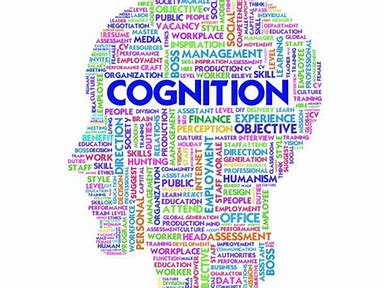< My Thoughts > When trying to fathom how one’s child has come to have autism, many reasons must be examined. Contained in this writing, I have attempted to gather ‘thoughtful’ views and current trends in ‘autism awareness’.
Yehya (2023) believes that “Genes involved in inflammation, immune response and neural connectivity behave differently in brains of people with autism.” In addition, Schumann said, “The findings from our study are really important in understanding what is happening in the brains of people with autism. Identifying these changes over time gives us an opportunity to think about some interventions that might be more useful in certain periods.”
Wigler (2022) claims that there is more than a ‘random’ chance that a family with an autistic child will also have siblings with autism. But that in large families, only ‘one’ child may show signs of autism. This could possibly be due to the combination of both the child’s ‘inherited genes, and ‘sporadic gene combinations’ and/or the ‘destruction or damaging of genes’ through ‘environmental insults’ or ‘spontaneous mutations’. He also wants us to know that while girls may not show symptoms, they can still be carriers of autism. Thus, putting their future children at-risk and making it seem that autism appears more often in boys.
< My Thoughts > This doesn’t explain the higher risk for autism in boys, than in girls. Nor, does it define whether these exposures, if detrimental, are experienced by the mother during the gestational period; or by the child during the developmental period. So many questions remain unanswered.
< My Thoughts > This doesn’t explain the higher risk for autism in boys, than in girls. Nor, does it define whether these exposures, if detrimental, are experienced by the mother during the gestational period; or by the child during the developmental period. So many questions remain unanswered.
Aungst (2023) shares that Mark T. Gladwin, MD says that “This study is one of the first to show that gene expression changes during inflammation may set the stage for later cellular dysfunction, such as reducing synaptic connectivity or altering energy metabolism,” While, Dr. Ament believes it is crucial to understand the roles of specific cells within the brain regions—as well as how they interact with genes to influence brain function—to find treatments for brain disorders, like ASD.
< My Thoughts > While some say that ‘autism traits’ will appear on or before the child reaches 18 months of age, more recent findings consider the appearance age to be closer to 36 months. Or, don’t become obvious until a child is presented with certain behavioral demands in environmental, social, and/or preschool settings. Often, when a child cannot meet these demands, s/he retreats, withdraws, or ‘acts out’. But chances are that when exhibiting undesirable behavior… they are not trying to ‘give you a bad time’; they are ‘having a bad time!’
Geschwind, D. H. (2023) answers the question, is autism is hereditary? He says that Autism is highly heritable: It is estimated at least 50% of genetic risk is predicted by common genetic variation and another 15-20% is due to spontaneous mutations or predictable inheritance patterns. The remaining genetic risk is yet to be determined.
< My Thoughts > The shocking rise of autism rates from 1 child in 50, a generation ago, to 1 in 36 children, today. Some will say that the reason is more awareness by developmental professionals, pediatricians and psychiatrists in diagnosis.
Others, such as Staff Writer (2023) for the National Institute of Environmental Health Sciences says, “Progress has been made toward understanding different environmental risk factors, and the clearest evidence involves events before and during birth.” Such as:
- · Advanced parental age at time of conception.
- · Prenatal exposure to air pollution or certain pesticides.
- · Maternal obesity, diabetes, or immune system disorders.
< My Thoughts > Trying to understand autism causes, before and during birth, can be overwhelming. Added to that, increasing immune disorder diseases plaguing us, seems to complicate the quest for answers.
Bogdashina & Casanova (2016) describe HYPER-Activity response as caused by a sensory channel that may stay ’wide open’, resulting in more stimulation than the brain can handle. Continuing to explain that children with hyper-activity often engage in ‘stim’ behavior in order to normalize sensory input. When involved in ‘stimulating behavior’ these individuals will rock, spin, flap, or tap in order to calm themselves. Coping with unwanted sensory input, or even their own ‘stimming’ behavior can result in the child covering their eyes or ears and making noises to block out input to the brain.
< My Thoughts > Although the former First Lady is speaking about the Autism population, I’m leaving you with this final thought from Michele Obama (2022). “When we learn to foster what’s unique in the people around us, we become better able to build compassionate communities and make meaningful change.”
Note: My next BLOG will be an attempt to help #ASDparents & #ASDcaregivers decide 'What to do While Waiting'.
References:
Aungst, H. (2023). New Research Shows How Brain Inflammation in Children May Cause Neurological Disorders, such as Autism or Schizophrenia; Retrieved online from: https://www.medschool.umaryland.edu/news/2023/new-research-shows-how-brain-inflammation-in-children-may-cause-neurological-disorders-such-as-autism-or-schizophrenia.
Bogdashina, O., & Casanova, M. (2016). Sensory Perceptual Issues in Autism & Asperger Syndrome; 2nd Edition, eBook.
Geschwind, D. H. (2023). New genetic clues uncovered in largest study of families with multiple children with autism. Retrieved online from – https://www.uclahealth.org › news › new-genetic-clues-
Obama, M. (2022). The Light We Carry: Overcoming in Uncertain Times; eBook.
Staff Writer (2023). Autism Predictors; Retrieved online from – nih.gov https://www.niehs.nih.gov › health › topics › conditions
Wigler, M. (2010). A Unified Theory of Autism – Big Think; Retrieved online from – https://bigthink.com/videos/a-unified-theory-of-autism
Yehya, N. A. (2023). Age-related Brain Differences in Autistic Individuals; UC Davis Mind institute. Retrieved online from – https://health.ucdavis.edu/news/headlines/uc-davis-study-uncovers-age-related-brain-differences-in-autistic-individuals/2023/03.



 RSS Feed
RSS Feed